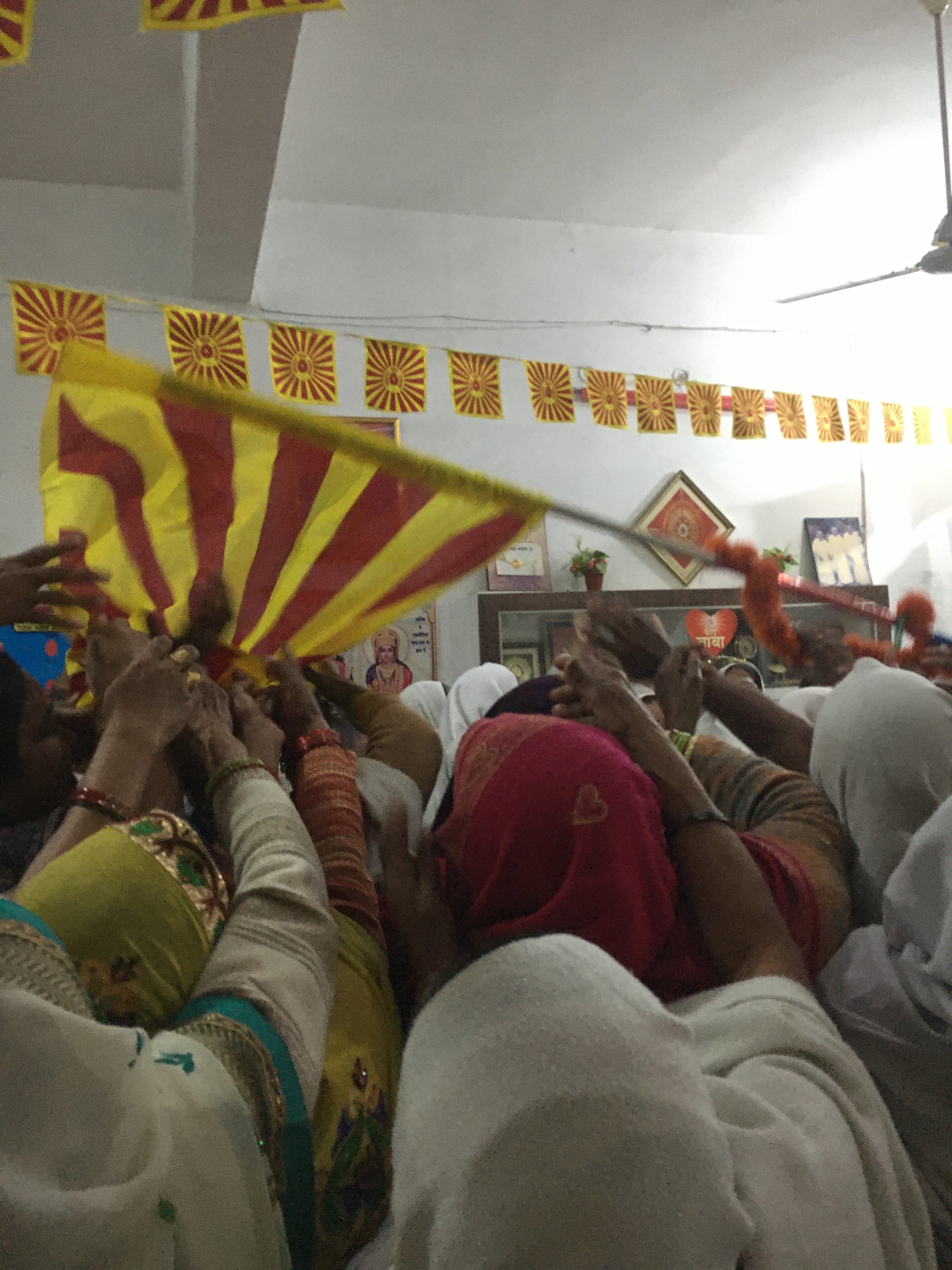BSA College
Brahma Kumaris
The BSA College area is, as its name suggests, characterized by the BSA College of Engineering and Technology, a campus just north of the Mathura Junction railway station. The surrounding neighborhood extends the length of BSA College Road, an East-West artery that connects the Mathura-Vrindavan Road with the NH-2 highway. Although most students live in the college hostels, a visitor to BSA College Road would immediately sense a nearby student population: the street is a tangle of fast-food shops in competition with large bilboards that advertise test-prep services, private tutoring, and study libraries.1
Tucked among the sidestreets of BSA College Road are two Brahma Kumaris centers, which I came to visit often during my stay in Mathura. Although most agreed that the main BK center of Mathura stood on the southern edge of the Potra Kund, in the shadow cast by the Krishna Janmsthan Complex, I felt that both BSA-College-area centers had features which made them more “central,” at least to their regulars. Since most sport multiple generic names such as “Om Shanti Building,” “Rajyoga Service Center,” or “Seat of Learning,” I identify these local centers by the people who lead them, even though few Brahma Kumaris would themselves do so.
BK Vinod’s Center
When he turned sixty years old, Vinod received a vision from Dada Lekhraj2 instructing him to carry out this work in Mathura. Much to the consternation of his son and daughters, this would mean uprooting from his support network in Bhopal and beginning a new chapter of life in an unfamiliar place. Despite Vinod’s meek demeanor, his resolve did not waver. For the past several years, this retired Chemistry teacher has been converting his new home in Mathura into a Brahma Kumaris center. The organization has several protocols according to which new structures become recognized as official BK establishments, and during the course of my time in Mathura, I witnessed Vinod struggle to meet nearly impossible demands upon him by higher-ups. Among these were vague rules about the minimum distance between centers, who had the authority to approve his work, and whether he was eligible – as a man – to operate such a center.
I have no doubts that Vinod’s project was seen as the eccentricity of an aging man by several in the orbit of Mathura’s Brahma Kumaris. There was no need for another building, they thought, since the main center had plenty of seating for its daily activities and another BSA-area center already existed. Yet for a select few, the unofficial and in-progress aspects of Vinod’s home made it an ideal place to pursue religious truths. For Vinod, the work was synonymous with his identity as a Brahma Kumar: he had been enjoined on this project by no other than God. For Hari Om, a young man pursuing a degree in Vocal Performance from a university in Agra, evenings in the quiet meditation hall of Vinod’s home were an ideal transition into quietude from the chaos of the classroom and the world outside. Chai, biscuits, and conversation with Vinod were added bonuses.
BK Sujata’s Center
Further into the residential alleys of the BSA College area, Sister Sujata offers morning and evening sermons to an often-full meditation hall that earned its official recognition as a Brahma Kumaris space in 2012. Sujata is younger than the other Brahma Kumaris officiants in Mathura by a substantial margin: she has not yet turned forty. Both her explications of Brahma Kumaris teachings and the mood of her congregation reflect that youth: compared to the austere quiet of the main BK building near the Krishna Janmsthan, Sujata’s center feels full of pep.
At the very least, several attendees contribute to the community in ways not visible at the main center. One man – a husband, father, and employee of a corporate travel agency – offers guided meditations several times a month. Another regularly sings at the close of Sunday meditation sessions. Indu, a sixty year old woman who walks from home, jumps at every opportunity to share her religious experiences with the group, and she never fails to note down attendence in a red register at the end of each morning’s sermon. On Shiv Jayanti, a holiday understood by the Brahma Kumaris to signify the day the supreme God made Dada Lekhraj his vessel to prepare humanity for the coming apocalypse, Sujata’s center was brimming with activity. A guest speaker had arrived from Palwal, a town along the highway towards Delhi, and during a flag-waving ceremony congregants jumped over each other in attempts to touch the banner – reaching, no doubt, for God.
- To my initial surprise, these “libraries” held no books; rather, they resemble internet cafes without the desktop computers. Several rows of empty desks and chairs offer students a quiet place to work for a monthly fee. For those who bring their own computers, wireless internet of debatable speed is also available. ↩
- Dada Lekhraj is the founder of the Brahma Kumaris Spiritual Univeristy. It is interesting to note that in was during his sixtieth year as well that Lekhraj received a vision from God instructing him to prepare the world for an impending apocalypse. ↩


